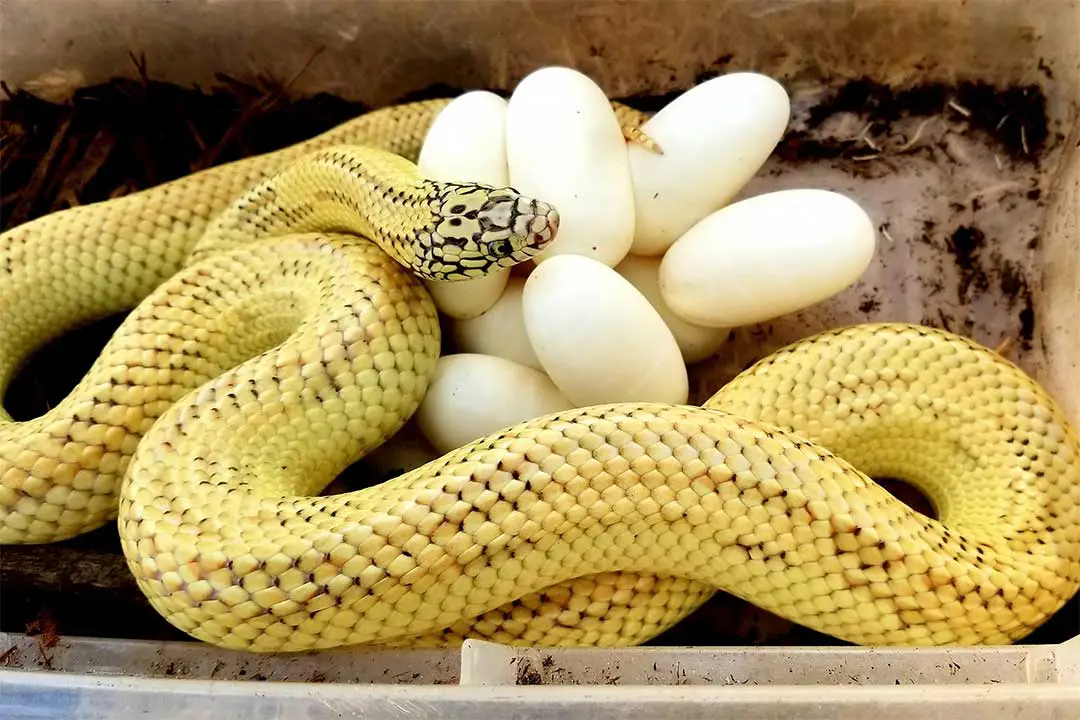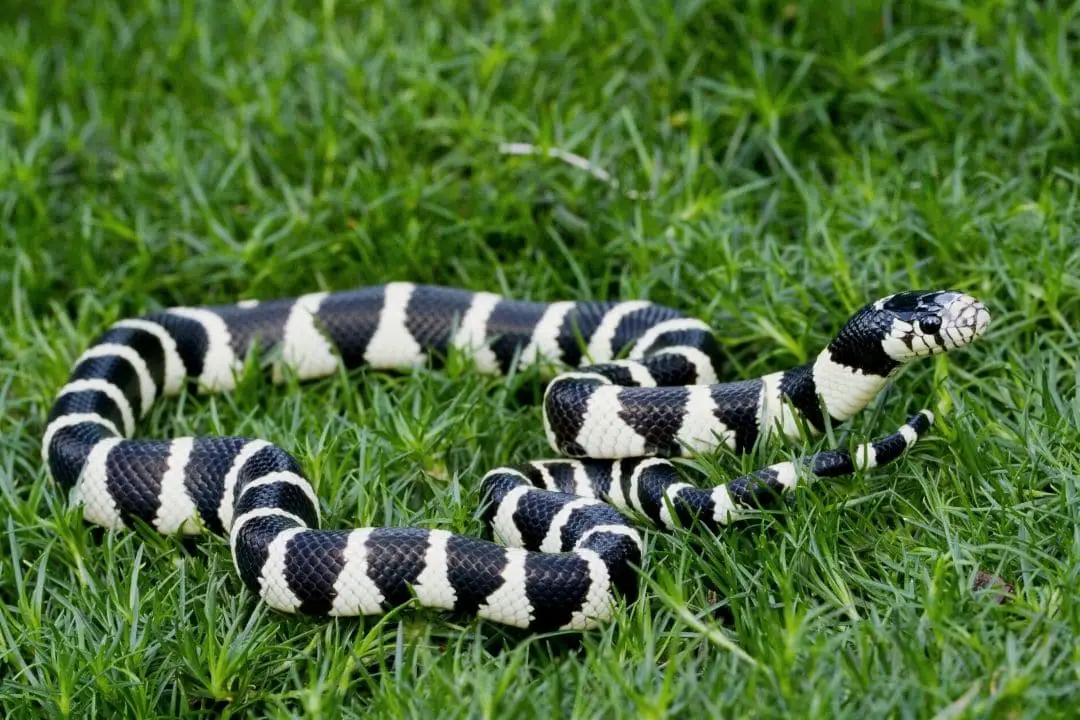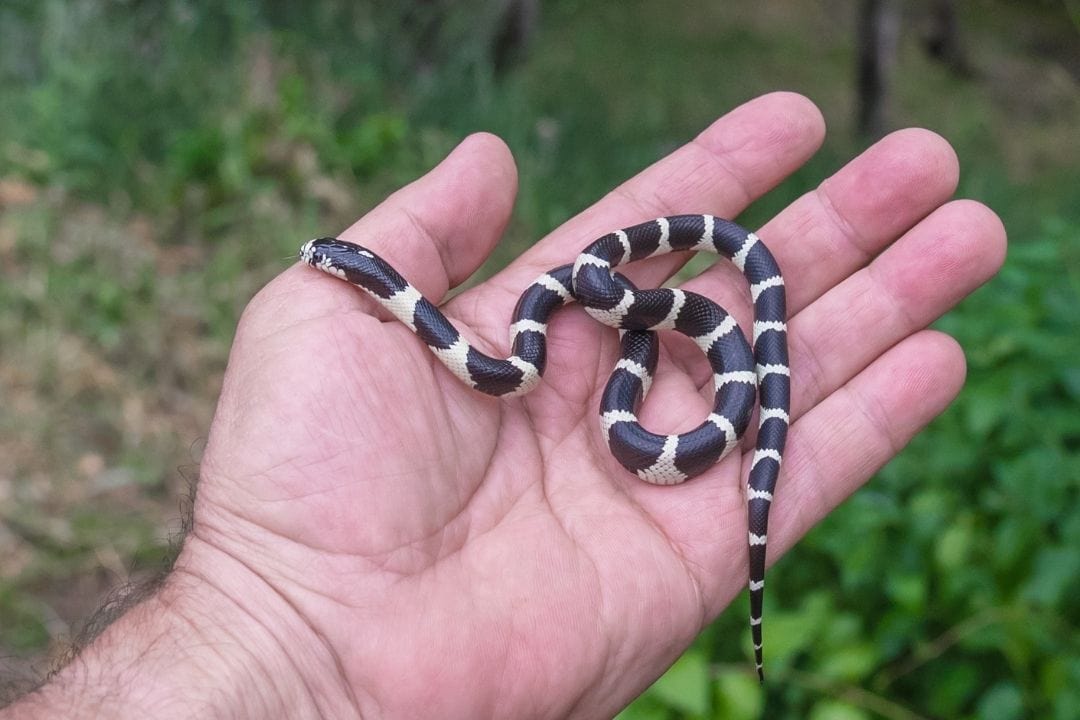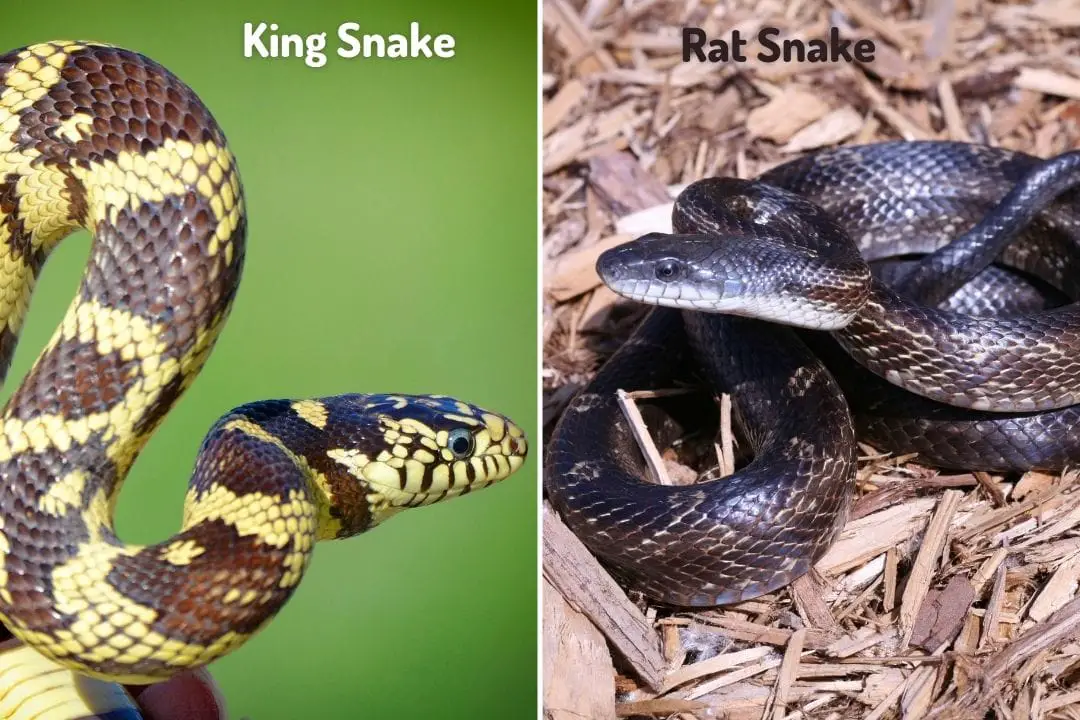King snakes (Lampropeltis genus) are wonderful snakes. There are many species in captivity, and many of these have unique colors and patterns. When these were selectively bred for by humans, this is called a morph.
Some species of kingsnake like the California king snake (Lampropeltis californiae) have plenty of morphs available while other snakes only have the various localities available.
This list will mainly cover the Calfornia king snake, but other species will be noted. This is also true if another species has the same or a similar morph.
1. Albino
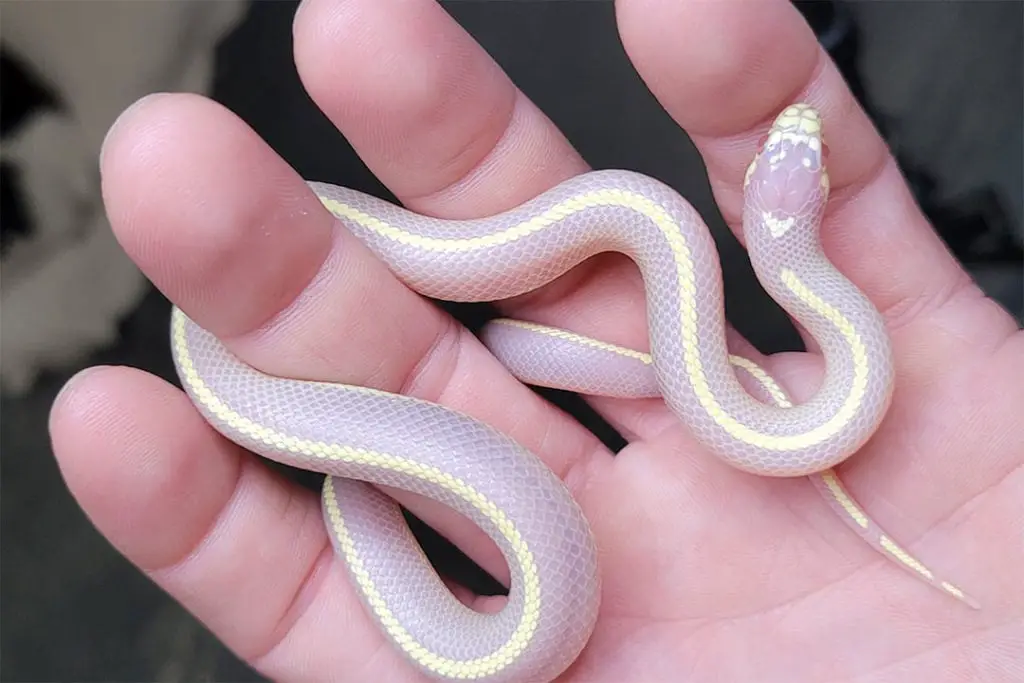
Albinism is one of the most common morphs you will find in captivity.
This is the lack of melanin. It can be either T+ positive, where the snake has normal eyes and may appear less bright since they have Tyrosinase or lack it to make T-. T- animals tend to be brighter in color.
Depending on the exact species, T- animals may be light yellow, cream, white, or lavender with pink or orange eyes. A T+ animal may have a light caramel color or have more yellow.
Species with this morph include California king snakes, Brook’s kingsnake (Lampropeltis getula brooksi), Ruthven’s kingsnake (Lampropeltis ruthveni), and Florida kingsnakes (Lampropeltis getula floridana).
2. Lavender
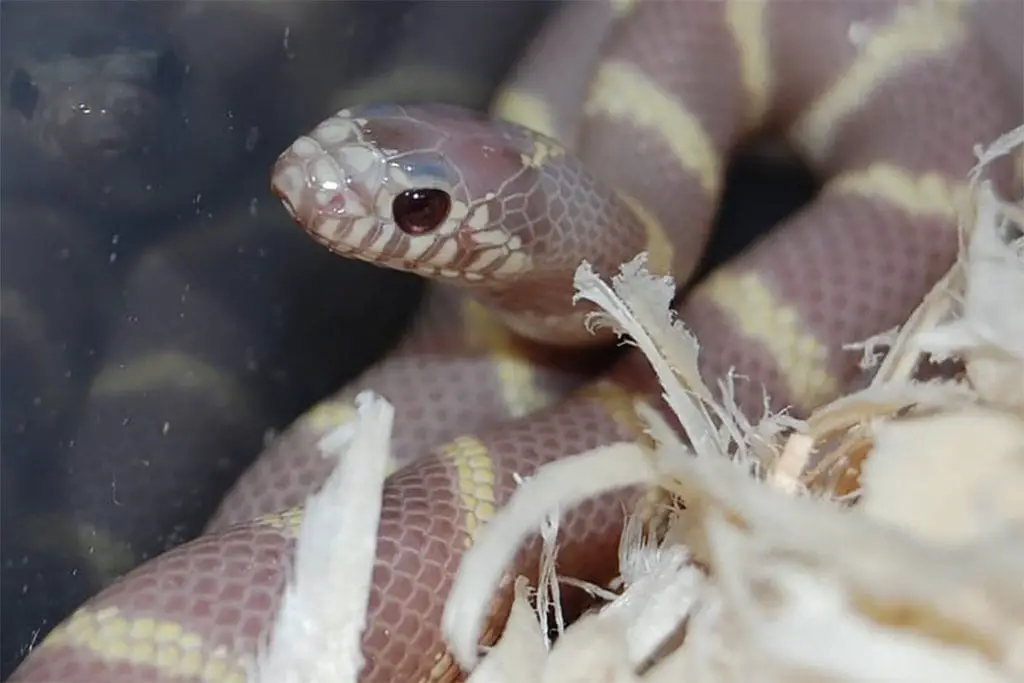
Lavender is named for the purple shade it gives to snakes. They look pretty similar to albinos but you can tell the difference by looking at their eyes (lavender have dark eyes instead the the albino red)
This can be found in California kingsnakes and Florida kingsnakes. However, other species may have it since it is typically named for the shade it causes in the snake.
3. Chocolate
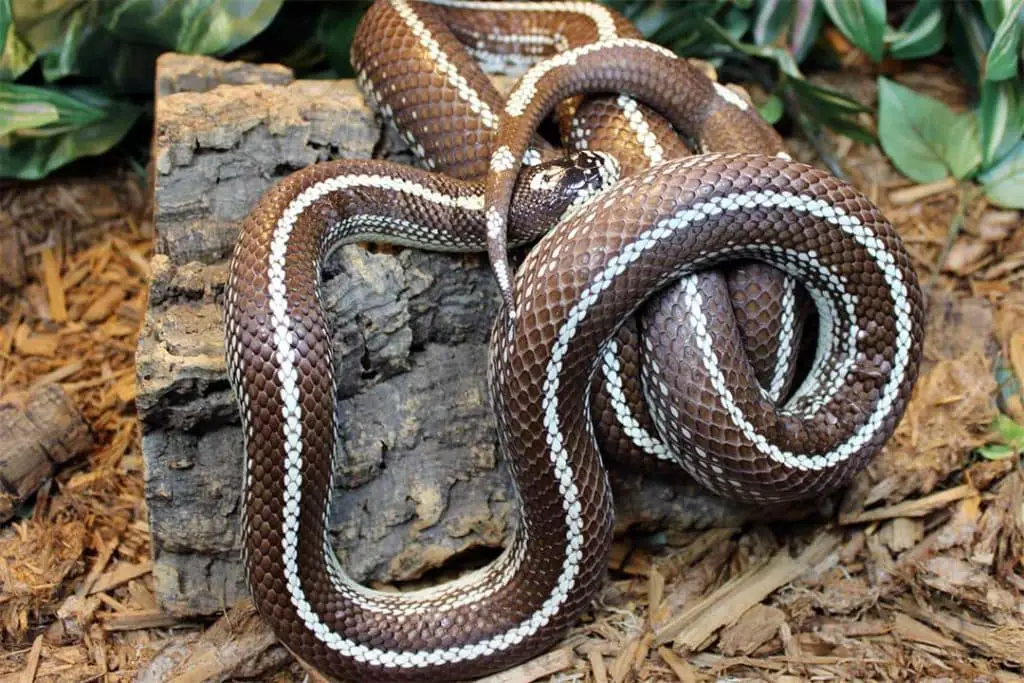
This is a morph named for the deep brown color the snakes are.
This can be caused by the snake producing more melanin. This is found in California kingsnakes, but it can be found in any kingsnake with a deep brown morph.
California kingsnakes tend to have no patterns as well since patterned snakes are just called hypomelanistic.
4. Patternless
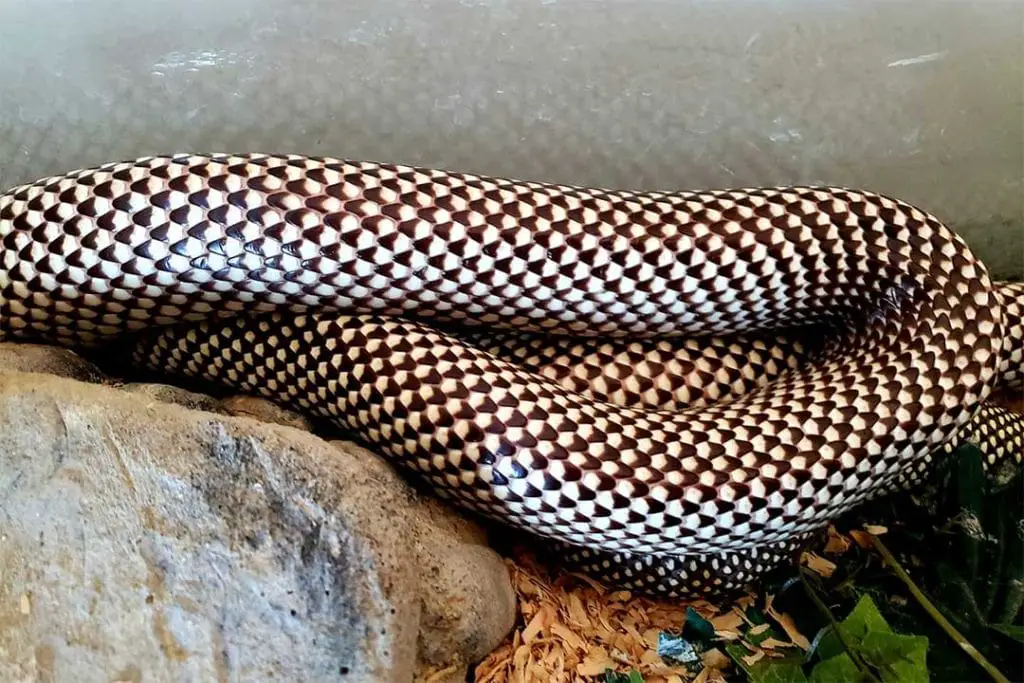
This morph is seen most in Florida king snakes but can be found in other species.
These snakes lack the normal pattern, so they are solidly the background color. It can be combined with other genes to create unique looks.
5. High White
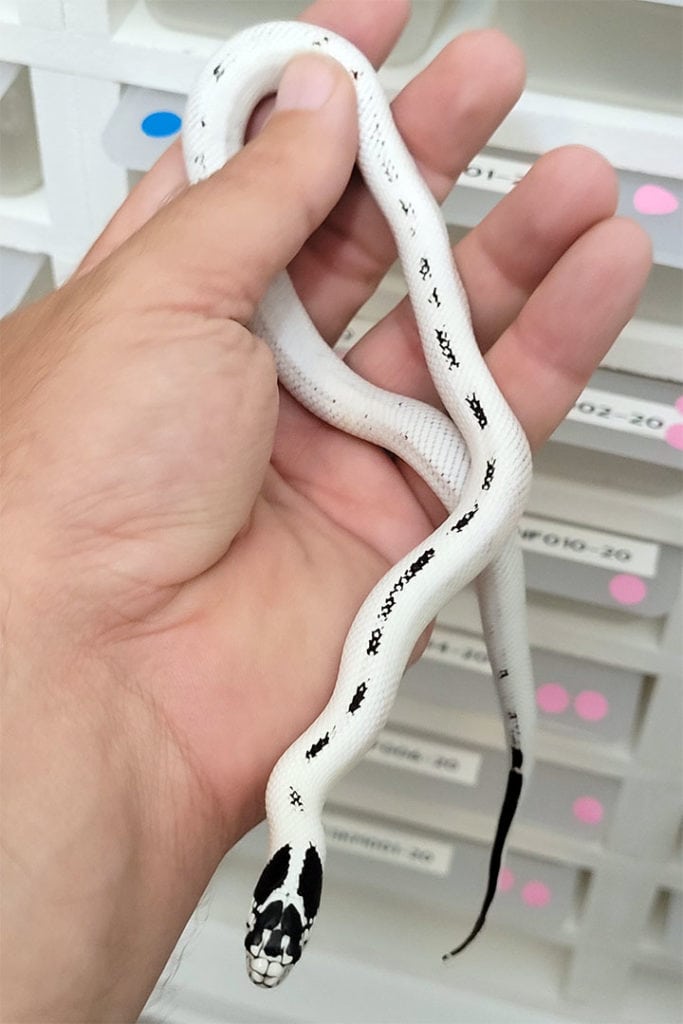
This is most often seen in California kingsnakes, but some other species are called this as well.
These snakes tend to be bright white or a very light cream with very little of the black markings left. Most are only found on the head and tail.
6. Granite

This morph name is a common one since it refers to any snake that looks like the type of stone.
This can be found in the San Luis Potosi king snake (Lampropeltis mexicana mexicana.
It has a form where the snake has two copies of the gene. This results in a snake with a gray background and colored flecks over the scales.
7. Banana
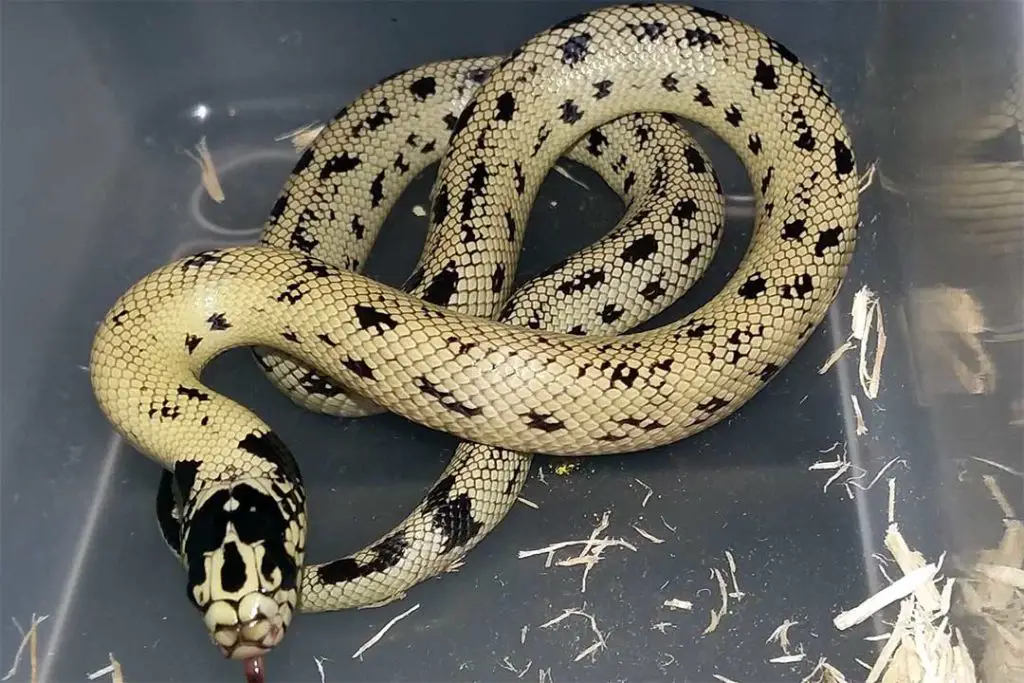
Banana is the name given to bright yellow and black California kingsnakes.
Most will have reduced patterning along the body, so only the head and tail may retain some black or brown.
8. Hypomelanistic
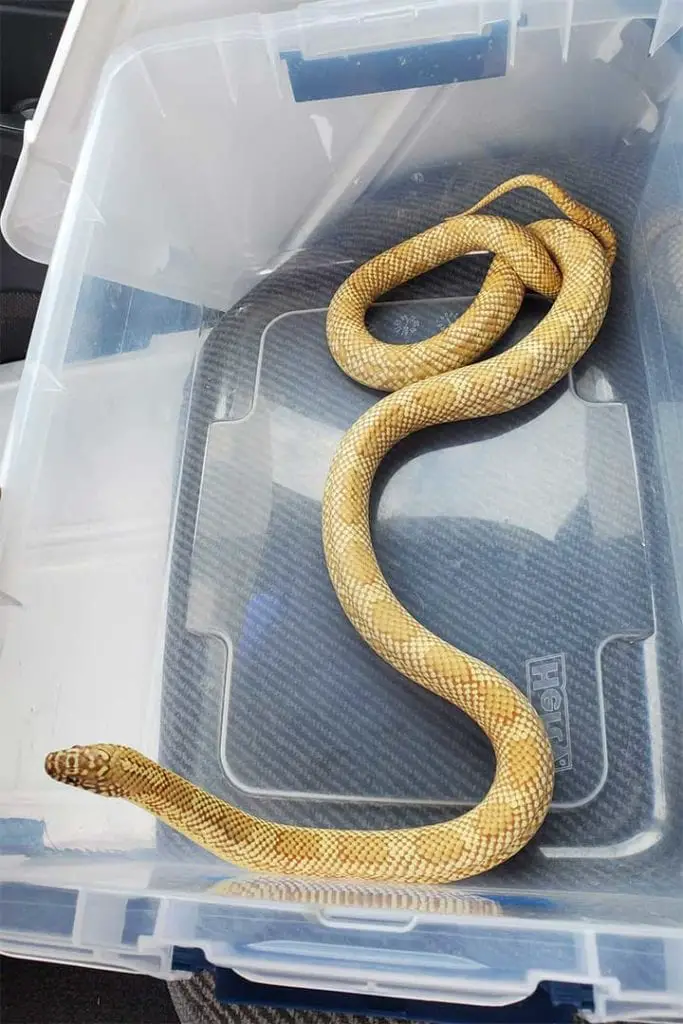
This is a morph caused by the reduction of melanin. The other remaining pigments tend to look brighter in comparison.
It can be found in many species, but California kingsnakes and Florida kingsnakes are the most common.
The exact appearance will depend on the species of the snake and what other genes it may have.
9. Anerythristic
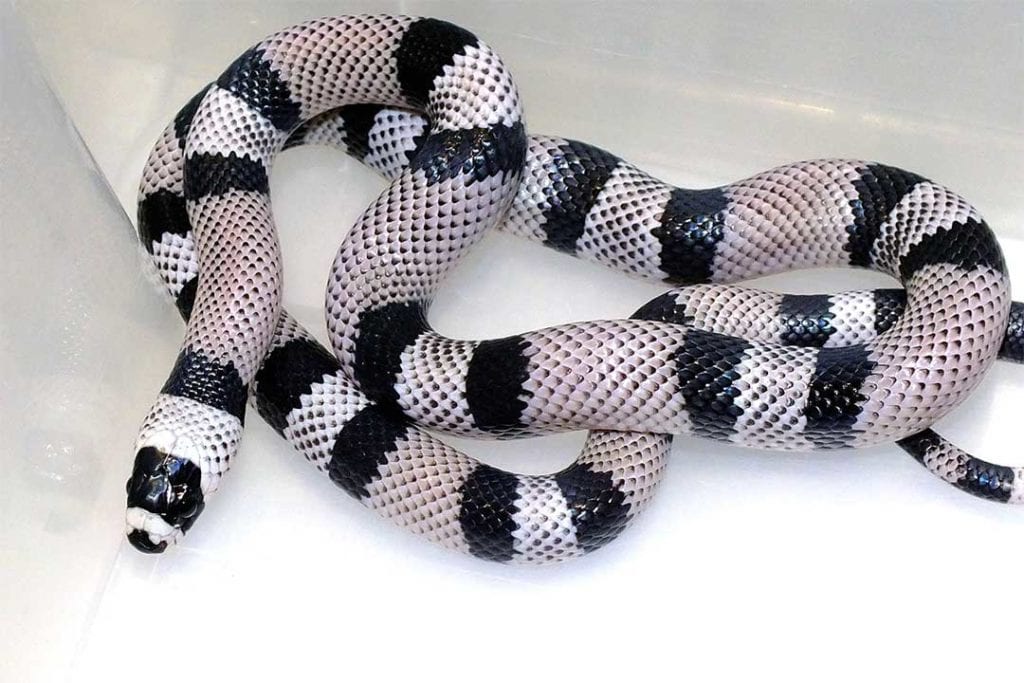
This is another common morph since it is caused by a lack of red pigments. Any kingsnake with red in its normal colors can have this gene.
This includes Florida kingsnakes, but it is very common. The exact appearance varies by species but many will display more yellow or black.
10. Axanthic
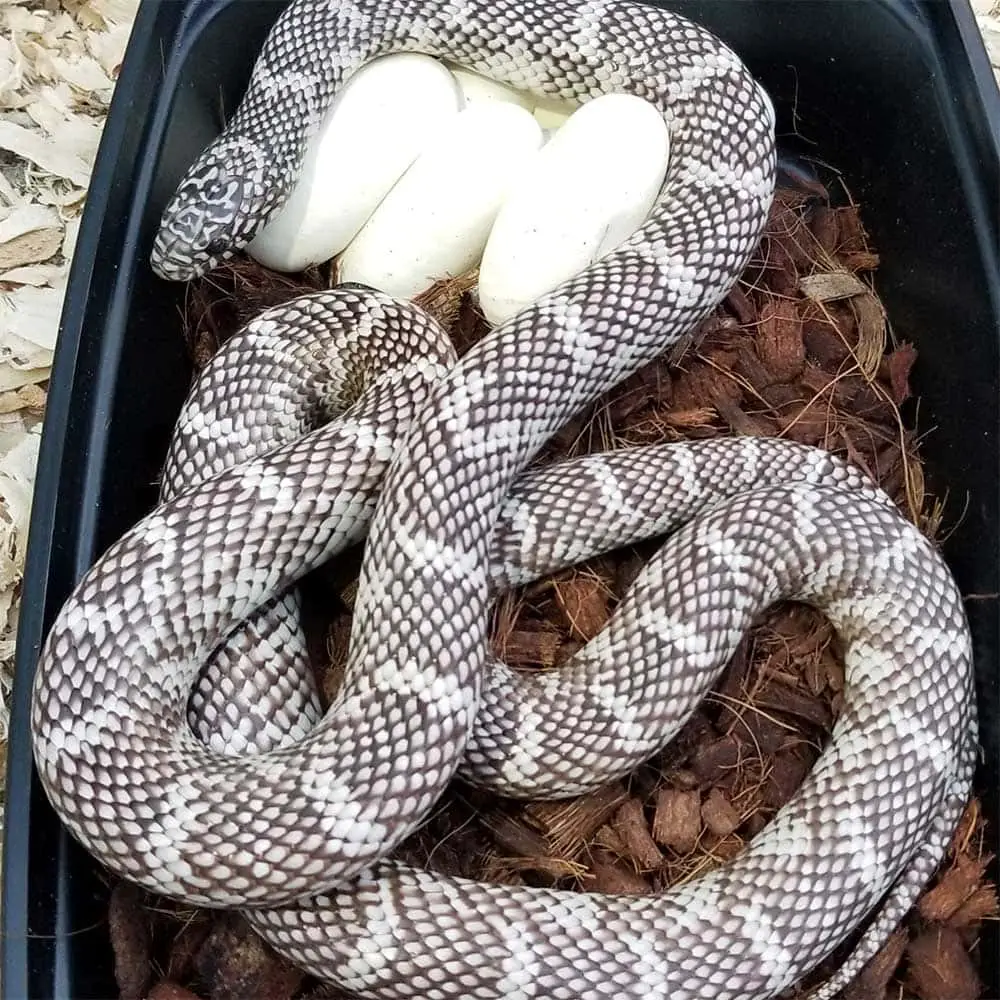
This is a morph caused by the lack of yellow and red pigment in the snake. Any kingsnake with yellow in its pattern can have it, but Florida kingsnakes tend to be the most common on the market.
They seem to be grayer in tone than a normal kingsnake. The exact look and effect of the gene depend on the species.
11. Mosaic
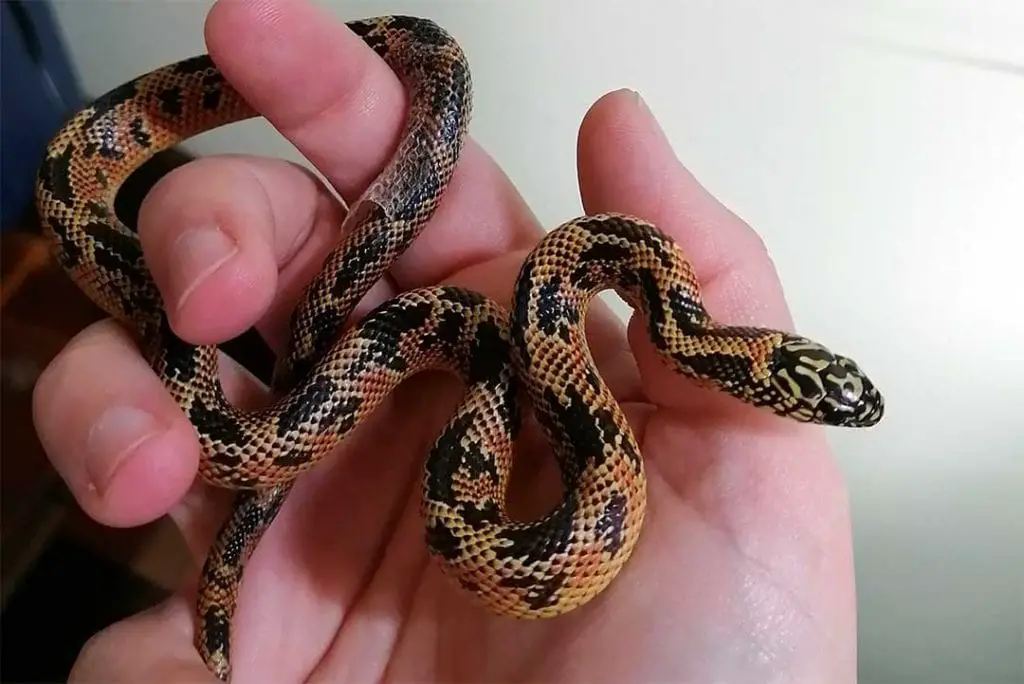
This is a pattern morph that causes an aberrant appearance. In Florida kingsnakes, it redistributes the pattern and sometimes the color.
In California king snakes, it typically causes the pattern to change. The vertebral stripe is normally absent or remains only as scattered dots. The side markings are variable but are frequently small windows of white or cream scales.
12. Amelanistic
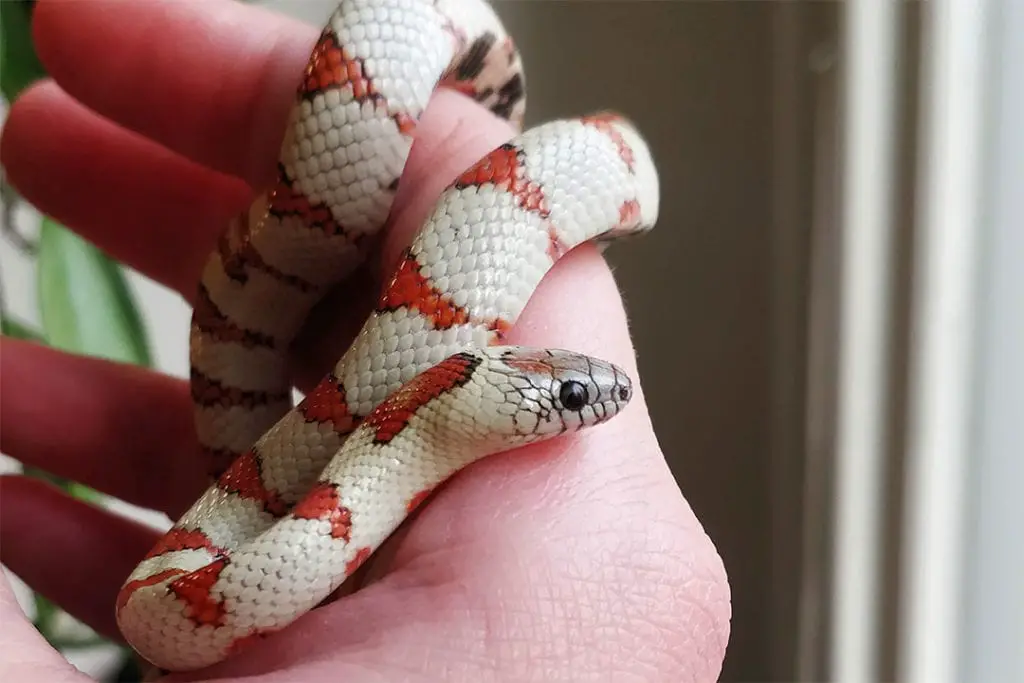
This is caused by a complete lack of black in the snake.
It is caused by the albinism gene in most species, with the snakes being T-. Snakes with this morph include the Arizona Mountain kingsnake (Lampropeltis pyromelana pyromelana), but it can be found in other species even if it may not be called that.
13. Double Striped
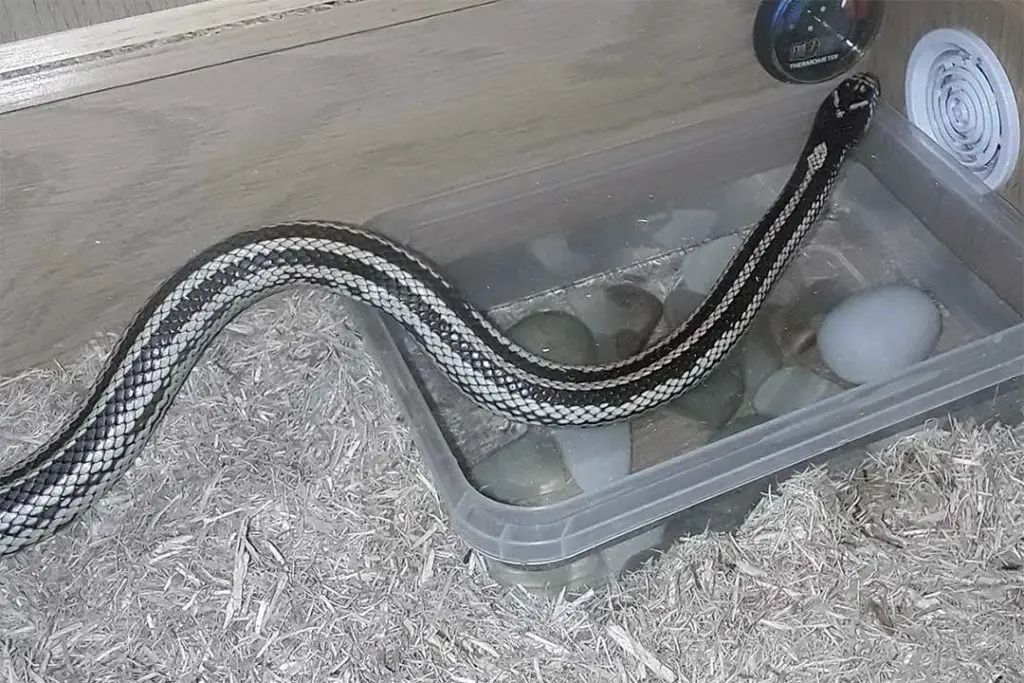
This is a pattern morph of the California king snake. It causes the snake to have two stripes going down its back.
High-quality examples have solid stripes that stay even in thickness down the body.
14. Reverse Dotted
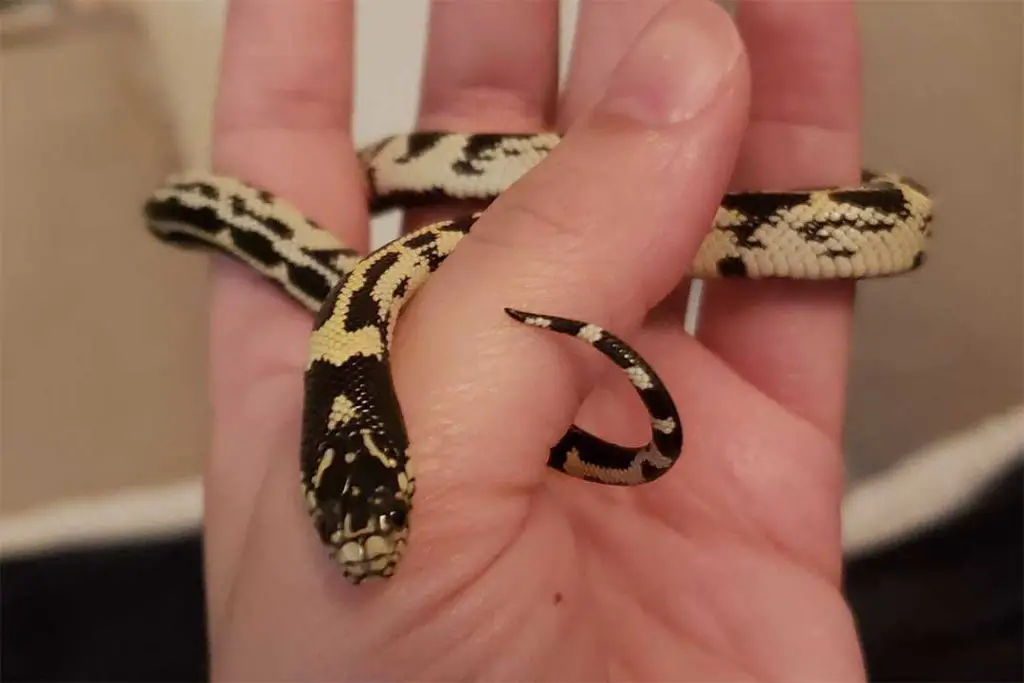
This pattern morph is also for the California kingsnake and causes the snake to have dots down the back in place of the usual pattern.
15. Erythristic
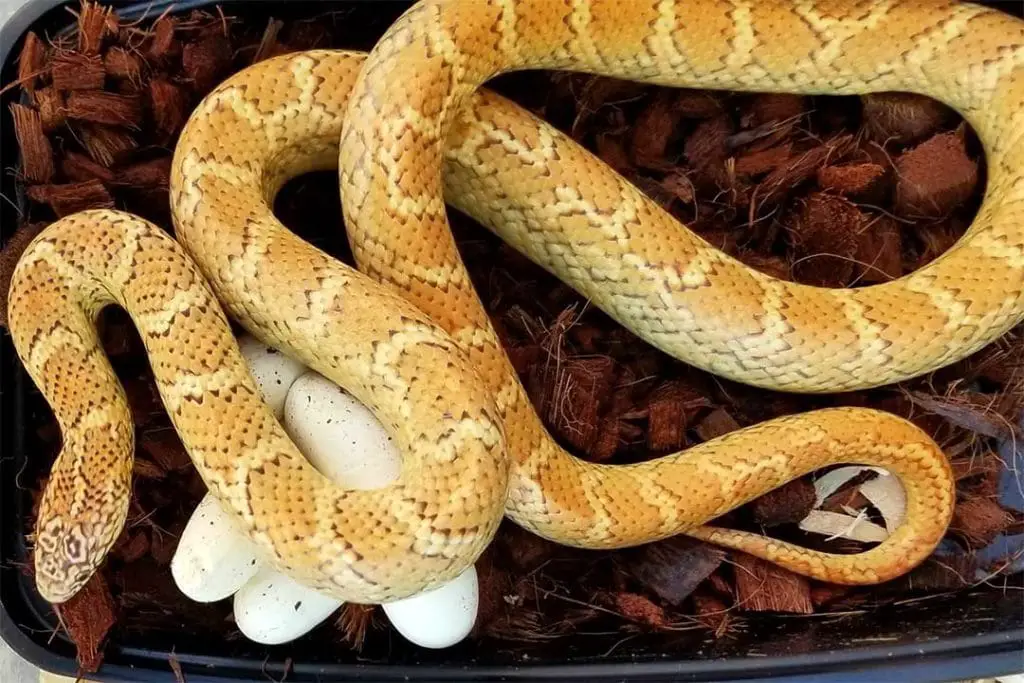
This is a morph of the Florida king snake that can have a few different names depending on the line and appearance of the snake.
These snakes have increased red pigments that make them bold red or orange.
Many have been bred to increase the appearance of the colors. Since the look can change, ask for pictures of the parents and adult siblings if possible.
Conclusion
There are plenty of kingsnake morphs out there for many different species. Be sure to do some research on the exact species you want to see what is out there.
There are some stunning snakes out there we weren’t able to cover in this brief list. If you have a favorite, please tell us about it in the comments below!
